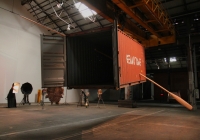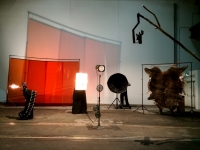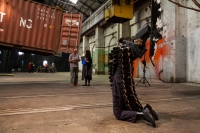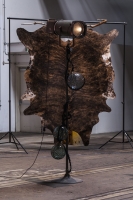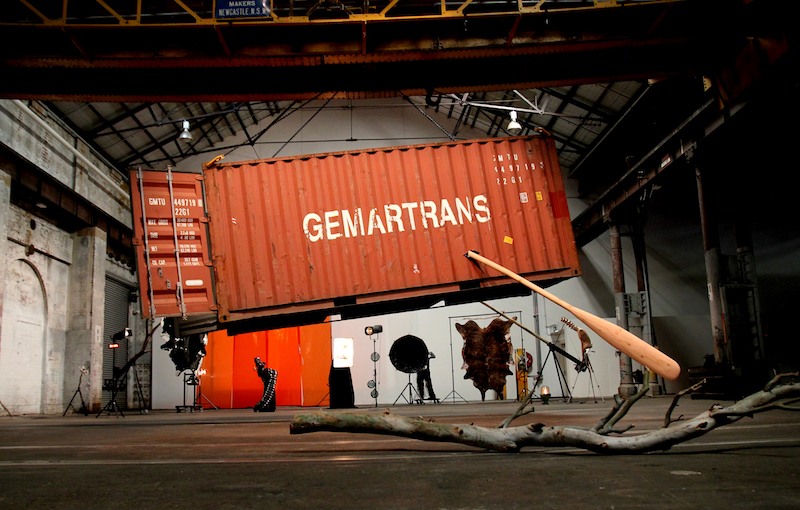
Minouk Lim, Strange Fruit, 2016, mixed-media installation, dimensions variable. Installation view (2016) at Carriageworks for the 20th Biennale of Sydney. Courtesy the artist. Created for the 20th Biennale of Sydney. Photograph: Minouk Lim
The work of South Korean artist Minouk Lim explores the human and societal costs of modernisation. Working across a range of mediums, including performance, video, sculpture, installation and community-engaged public art, Lim’s work takes as its inspiration, and often its material, the globalised world. Themes of alienation, collective memory, loss of place, detritus, rapid growth, obsolescence and political power all resonate through her powerful and poetic works. Lim has described her video-based works as ‘performance documentary theatre’, and her works are often experienced as a live event or a series of records after the fact, in the form of installations, films and sculptural remnants.
For the 20th Biennale of Sydney, Minouk Lim presents a new work, Strange Fruit, within the Embassy of Disappearance at Carriageworks. Lim is interested in ideas of shelter, immigration and the nature of objects as silent witnesses to absent or unspeakable histories. Her carefully arranged installation presents found and familiar objects in an unsettling tableau that is marred by an ambiguous, disconcerting tension.
In Strange Fruit, a bullet-ridden shipping container is suspended up and above what appears to have been a hastily abandoned photo shoot. What this field of photographers, with all their assorted shooting paraphernalia, was attempting to capture, and how they came to be there, isn’t clear, but the traces of their presence remain, like sentinels guarding a crime scene. Says Lim, ‘They are bearing witness to the presence that isn’t there; that has disappeared. They are waiting and wanting for something invisible, something absent.’
Lim considers the shipping container a literal placeholder for absent stories, people and histories; and Strange Fruit continues her interest in this association-laden object. Lim has used shipping containers to great effect in previous works, including her acclaimed piece for the 2014 Gwangju Biennale, Navigation ID and in her work Gates of Citizen, 2015, where the artist transformed four sets of container doors into a walkthrough acoustic installation.
This eponymous shipping container is an effective symbol of the movement of modern life, with all its practicalities and banalities, but it also has an uneasy, transitory quality that speaks to unseen violence, subterfuge, migration, risk and hope.
Strange Fruit is the first time Lim has violently tampered with the container form – in this case, shooting it with bullets – and this act is an important, inherent part of the performative nature of her work. These suggestive wounds add to the literal tension in the artwork, asking viewers to consider the container as both a body and a place of shelter under threat, asking: ‘What has just happened here, and what, or who, is missing?’ A symbol of the movement of modern life, with all its practicalities and banalities, the container also carries traces of a transitory, sinister other life.
Within the Embassy of Disappearance, Lim’s work asks viewers to bear witness to things unseen and unsayable; to consider the very idea of disappearance – that which has gone, to where, and why.
Minouk Lim has exhibited widely internationally with solo exhibitions, including ‘United Paradox’, Portikus, Frankfurt (2015); ‘Navigation ID’, 10th Gwangju Biennale, Korea (2014); and ‘Monument300_Chasing Watermarks’, DMZ at Cheorwon, Korea (2014). Selected group exhibitions that feature the artist’s work include, ‘The Time of Others’, Museum of Contemporary Art, Tokyo (2015); and ‘The Future is Now’, MAXXI National Museum of XXI Century Arts, Rome (2014).
